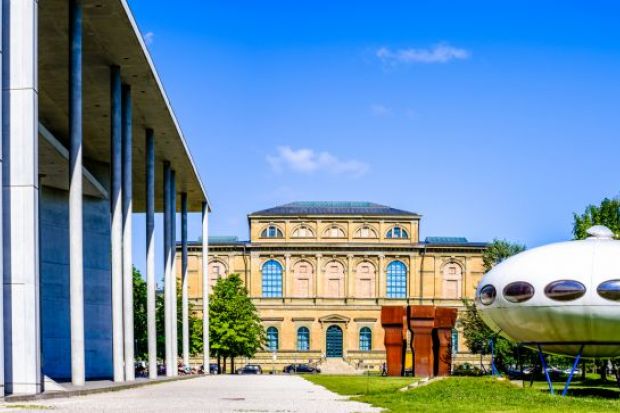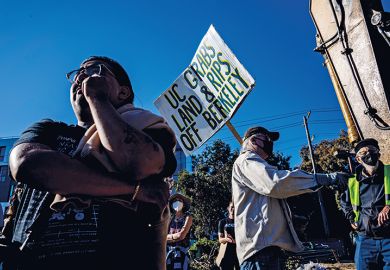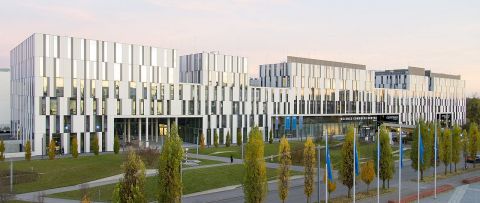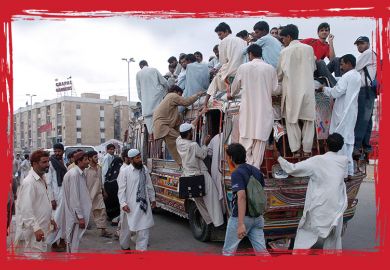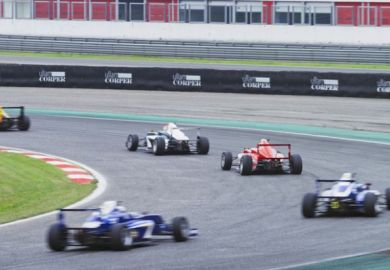Browse the full results of the World Reputation Rankings 2023
On the last workday of 2023, Orestis Papakyriakopoulos, an AI research scientist at Sony, entered my office to pick up the official documents for his new job as a tenure track professor at the Technical University of Munich.
He told me that he wanted to “develop technological tools to empower communities and foster a more inclusive society”. He will lead the civic machines lab within our TUM Think Tank and aims “to bring the academic world closer to citizens and policymakers”. That could include media monitoring tools for journalists or frameworks that protect artists during the current generative AI revolution, he said.
Orestis will not be the only one to build bridges between academia and society; TUM has recently hired eight other professors for its School of Social Sciences and Technology. Jörg Niewöhner calls for a different approach to knowledge production and innovation that is “public, careful and collective”, while Jana Diesner wants to “put humans right at the centre of designing technologies”.
Putting humans, society and the environment at the centre of designing technology fits very well with our public engagement strategy. For TUM, this is not just about outreach, but also about creating a two-way dialogue with society. By actively involving the public in its activities, TUM demonstrates its commitment not only to disseminating knowledge, but also to receiving and integrating societal input into its research and teaching.
We are also convinced that strengthening our public engagement will add to our visibility and our reputation. Another motivation drives us: the current generation of students is increasingly asking what the purpose of their studies is; they want to share their knowledge with the world outside academia.
As a result, we are expanding our public engagement activities around three pillars: inspire, enable, engage.
Inspiring the public means reaching out to different groups of people with different backgrounds and interests. We know that we must do a better job of addressing a diverse crowd. To give one example: TUM’s main campus is located in Munich’s museum district. Museums attract a group of people different from those at a university, so we use their locations to talk about our activities. At the same time, museums are very interested in younger visitors – these could be our students. Together, we are designing new formats in order to reach new audiences.
The second pillar is about enabling our researchers and students to communicate and engage with the public; they are the most valuable ambassadors of our university. We support clubs of students to get involved, such as TU eMpower Africa, a non-profit that unites students, researchers and alumni to foster the sustainable development of communities in Africa.
We aim to more systematically empower researchers to communicate better. In 2023, we started the TUM Public Engagement Academy. A diverse group of 15 professors – from different schools and backgrounds, and with different levels of seniority – is undertaking media training and learning how to talk to journalists, how to design social media strategies and how to start research projects with medical patients. This is only the start. Every year, another group of 15 will participate in the academy and grow into a community of practice in communication and engagement.
We believe that our students should also be able to explain, discuss and reflect on the content they learn in their classes. This autumn, they will be able to sign up and get credit for a new plug-in science communication module to learn the basics of communicating their research.
The third pillar of our public engagement strategy – engage – is about cooperation and co-creation. One of our research projects that got the most attention last year was MCube (the Munich cluster for the future of mobility in metropolitan regions), a research hub financed by the German ministry of education and research. A network of researchers, city planners and transport businesses tackle mobility questions, simulate scenarios of future public transport and use real laboratories to observe the transformation of streets with parking lots into green areas with playgrounds. Citizens are explicitly involved: car drivers who still want parking lots, tramway users who ask for more public transport, the elderly who need individual help. One major lesson: engagement needs the best possible communication because people easily feel left out when not properly informed.
Back to Orestis and his colleagues who just joined TUM: with their help we will identify more research projects that engage the public or policymakers, always keeping in mind that the exchange and dialogue with stakeholders will yield the most innovative solutions for societal problems.
Jeanne Rubner is vice president for global communication and public engagement at the Technical University of Munich. Before joining TUM in April 2022, she was head of the science and education desk at Bayerischer Rundfunk, a public-service radio and television broadcaster based in Munich.
Register to continue
Why register?
- Registration is free and only takes a moment
- Once registered, you can read 3 articles a month
- Sign up for our newsletter
Subscribe
Or subscribe for unlimited access to:
- Unlimited access to news, views, insights & reviews
- Digital editions
- Digital access to THE’s university and college rankings analysis
Already registered or a current subscriber? Login
